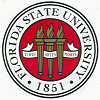
About the Mag Lab

High-temperature superconductors that could make your electric bill much cheaper one day. Nanotechnology that could pave the way for quantum computers capable of working exponentially faster than your PC.
Scientists at the National High Magnetic Field Laboratory are using magnetic fields for cutting-edge research in biology, chemistry, physics, material science, medicine and other areas. It's the world's largest and most powerful magnet laboratory in the world --- and it's getting even more powerful.
Last year, the Legislature gave $10 million for upgrades to improve the quality of magnetic fields, increase the number of researchers who can use the Mag Lab and allow magnets to run longer and at greater power. It's increasing its power from 40 million watts to 56 million watts and tripling the capacity of its chilled-water tank to 3 million gallons.
The science at the Mag Lab will become even more electrifying by the spring of 2006, when the infrastructure improvements are expected to be complete. The upgrades aren't just for boosting the gee-whiz factor at the facility --- they also are designed to help the Mag Lab keep or increase its federal funding, Director Greg Boebinger said.
The Mag Lab is in the midst of preparing its renewal application for the National Science Foundation, which gives the facility about $25 million a year, or roughly 75 percent of its funding. The proposal, which will be submitted in the summer of 2006, will make the case that the Mag Lab should stay put, Boebinger said.
"We always need to demonstrate that we're the best place to put the money," he said.
The Mag Lab hasn't always been in Tallahassee. It operated for more than two decades at the Massachusetts Institute of Technology before FSU and its partners in the Mag Lab, the University of Florida and the Los Alamos National Laboratory, outbid MIT for the facility in 1990. It opened here in 1994.
Part of the reason the Mag Lab hosts its annual open house is to increase awareness about its research. Scientists also are using magnetic fields to study the AIDS virus and tuberculosis, help with restoration of the Florida Everglades and develop technologies for an all-electric vessel.
"It's a national treasure, actually, and probably one of our best-kept secrets, unfortunately," said Florida State University President T.K. Wetherell, who hopes the facility can be used to entice high-tech businesses to town.
Boebinger said he considers it a challenge to educate people about the Mag Lab.
"Fortunately, it's a challenge that will never be completely fulfilled," he said, "because what we're doing here is changing every year as we push back the frontiers of knowledge."
WHAT IS THE MAG LAB?
Building: 330,000 square
feet, in Innovation Park
Power supply: 40 million
watt power supply; increasing to 56 million watts in 2006
Electric bill: $2.7 million
a year
Research magnets: World's
largest collection of record-setting powered magnets
Educational outreach: 7,000
students per year
Employees: 370; about 40
percent are postdoctoral fellows and students
Visitors: About 3,000 a
year
Funding: Nearly $31 million
in annual federal and state funding
Web site: http://www.magnet.fsu.edu
Source: National High Magnetic
Field Laboratory
The NHMFL was featured
on the ![]() History Channel's "Modern Marvels" on Thursday, October 6, 2005
History Channel's "Modern Marvels" on Thursday, October 6, 2005